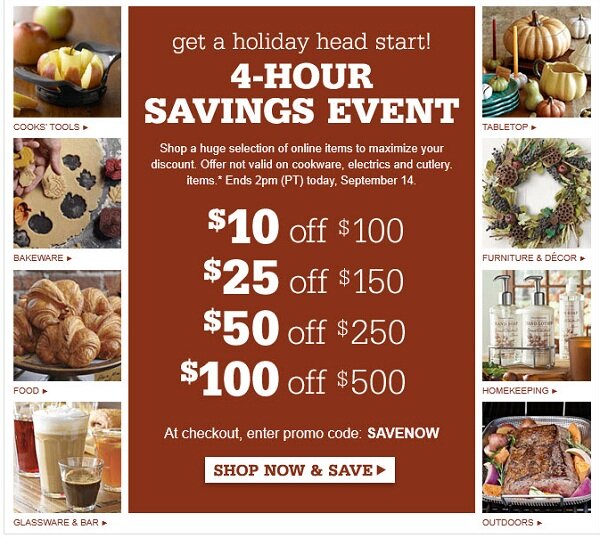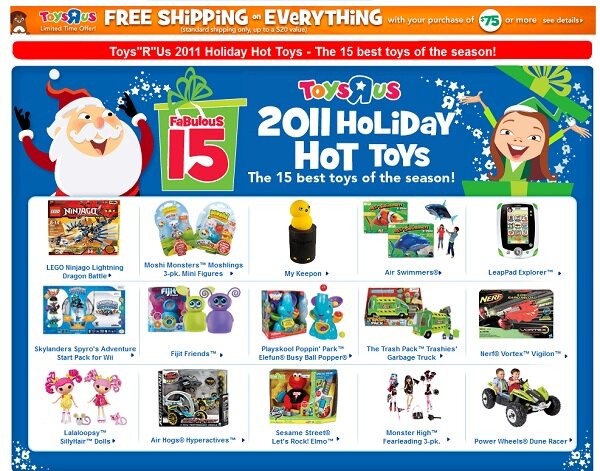Holiday 2011 first look: messaging to bargain hunters
September 29, 2011 Leave a Comment
By now you’ve probably read the early forecasts predicting that the 2011 holiday season will be a subdued affair. The International Council of Shopping Centers predicts a 2.2% gain overall, down from 4.4% growth in 2010. ShopperTrak, which combines economic trends with foot traffic data, predicts 3% growth overall, compared with the 4.1% gain it reported in 2010.
But in a continuing trend, eCommerce promises to be a bright spot. According to Internet Retailer, research firm Kantar Retail predicts a 13.5% increase in online sales. Although that’s a decline from the robust 16.5% growth Kantar reported in 2010, the 2011 forecast still holds out the promise of double-digit growth in an otherwise tepid year.
Forecasterss predict a rush of bargain hunters who will shop frugally and hold out for deals. As Jack Kleinhenz of the National Retail Federation told the Wall Street Journal, “There will be lots of promotions—that’s become the norm.”
To maximize the potential of online holiday sales in 2011, merchants should design their promotions with these savvy deal seekers in mind. That doesn’t mean automatically dropping prices or eliminating barriers to free shipping; it does mean prominently communicating the value of your brand and products wherever shoppers roam.
1. Make it easy to seize opportunities across channels.
Gift guides, shareable wish lists and “save cart”/”print cart” options have long been part of merchants’ holiday playbooks — but with shoppers doing more research than ever in advance of purchasing, it’s crucial to fulfill their need for product and promotion information, in whatever format they seek it. In particular, don’t neglect:
- Cross-channel visibility. If you offer in-store inventory lookup, make it prominent not only on your eCommerce site, but on mobile devices, so that shoppers on the go can quickly ascertain where they can find sought-after products and what discounts might be in effect at local outlets. Tie store locator services to your calendar of in-store events and promotions. And for catalogers, devote space in printed materials to encourage shoppers to sign up for email delivering frequent holiday deals and tips.
- Social-to-store possibilities. Use your Facebook page and Twitter feed not only to drive online sales, but to keep shoppers apprised of the latest in-store holiday happenings. Train social media customer service staff to localize responses and help connect shoppers with in-store as well as online options for resolving their questions.
- On-the-go discounts. Shoppers should be able to apply email offers on both mobile devices and through the Web site; if the technology is available, allow them to translate a promo code into a coupon they can scan from their phones in stores.
2. Encourage immediate purchases.
Counteract shoppers’ instincts to hold out for better bargains with irresistible promotions early in the season. These offers needn’t slash prices, but can focus on the convenience of beating the holiday rush and the security of knowing sought-after items will be in stock.
-
Promote pre-season bargains. Culinary retailer Williams-Sonoma’s email campaign encouraged shoppers to “get a holiday head start” by taking advantage of a 4-hour September sale. The campaign’s product imagery put the emphasis squarely on decor, tabletop items and glassware — categories suited to shoppers with plans to host get-togethers for family and friends during the coming holiday season.
 Target’s home page promotion similarly mentions holidays explicitly with the tag line “Cyber Monday deals before November” — promising shoppers they’ll find discounts now that are as enticing as what will be offered later in the season, when much-hyped shopping days such as Black Friday (the Friday after Thanksgiving) and Cyber Monday (usually the second Monday in December) drive frenzied sales spikes.
Target’s home page promotion similarly mentions holidays explicitly with the tag line “Cyber Monday deals before November” — promising shoppers they’ll find discounts now that are as enticing as what will be offered later in the season, when much-hyped shopping days such as Black Friday (the Friday after Thanksgiving) and Cyber Monday (usually the second Monday in December) drive frenzied sales spikes. 
- Play up scarcity. Merchants should prominently promote new arrivals, holiday-specific products and popular gifts — and, especially in the early going, message the convenience of purchasing now rather than scrambling to find items later. For example, retailer Toys “R” Us has already published its 2011 Hot Toy List of popular gifts; product pages emphasize scarcity by limiting the number of items purchased per customer and encourage immediate purchase with a free shipping discount.


3. Emphasize “white glove” customer service – starting with shipping.
Shoppers’ relentless focus on the bottom line can be an opportunity for merchants to emphasize the value of stellar customer service. Make customer service information especially prominent — not only on your eCommerce site, but also on social outposts and your mobile site. After all, what’s the use of scoring the lowest possible price for a product if it doesn’t end up arriving in time, or if confusion over a return or exchange policy mars the purchase experience?
First and foremost, put a special emphasis on shipping. From a marketing standpoint, shipping discounts are the top promotions online buyers seek during the holidays — so featuring them prominently is a winning strategy to boost sales. And from a service standpoint, clear communication over delivery options and timelines helps shoppers complete purchases in time and within their budgets.
-
Offer shipping promotions consistently across channels. When you offer free shipping with or without a threshold, be sure to promote it not only on your eCommerce site, but also in email, on mobile devices, and on social outposts. Land’s End promotes free shipping with orders of $50 or more when shopping directly from Facebook — the same threshold that applies on its eCommerce site.

-
Promote the service advantage of site-to-store purchasing. To encourage shoppers to buy online rather than simply heading to the store without completing purchases first, stress the convenience of site-sto-store pickup — Sears does in its “5 Minutes or $5″ promotion. Customers presenting an email purchase confirmation in the store will receive their items within five minutes, or else they’ll get a $5 coupon.

-
Message those timelines. Position messaging about delivery cutoff dates prominently across all your brand properties. The more detailed the information, the better — and don’t forget to pair it with instant access to customer service through all available channels — including phone, live chat, email, and Twitter. In 2010, Armani Exchange used a countdown clock on its eCommerce home page to message the number of days, hours, minutes and seconds shoppers had to complete their purchases in time for holiday delivery.
 Housewares manufacturer Cuddledown also featured a countdown clock — and offered a deeper level of detail showing delivery cutoff zones across the country. Shoppers could quickly scan the map, locate their delivery zone and get a precise cutoff date for their area.
Housewares manufacturer Cuddledown also featured a countdown clock — and offered a deeper level of detail showing delivery cutoff zones across the country. Shoppers could quickly scan the map, locate their delivery zone and get a precise cutoff date for their area.
MarketLive’s 2011 Consumer Shopping Survey and Holiday Strategies report, produced in conjunction with the e-Tailing Group, will be released October 26 – featuring holiday tips and best practices and highlights from our latest consumer survey. Register for the Webinar now — and meantime, let us know: what early holiday strategies have brought you success?






 ut while most merchants have now made customer service links easily accessible on their eCommerce sites, in a recent survey we found that less than 10% of the 40 largest U.S. merchants’ Facebook pages include a customer service phone number – and only one showcased its online chat feature via Facebook. It’s an easy change to make: incorporate customer service information prominently, as Crate & Barrel does on its Facebook page by integrating the customer service number prominently into the anchor graphic on its page.
ut while most merchants have now made customer service links easily accessible on their eCommerce sites, in a recent survey we found that less than 10% of the 40 largest U.S. merchants’ Facebook pages include a customer service phone number – and only one showcased its online chat feature via Facebook. It’s an easy change to make: incorporate customer service information prominently, as Crate & Barrel does on its Facebook page by integrating the customer service number prominently into the anchor graphic on its page.


 We’re excited to launch the MarketLive Blog today. With it, we’ll establish a clearinghouse of best practices, emerging trends, and news from the world of connected commerce.
We’re excited to launch the MarketLive Blog today. With it, we’ll establish a clearinghouse of best practices, emerging trends, and news from the world of connected commerce.
Connect with us: